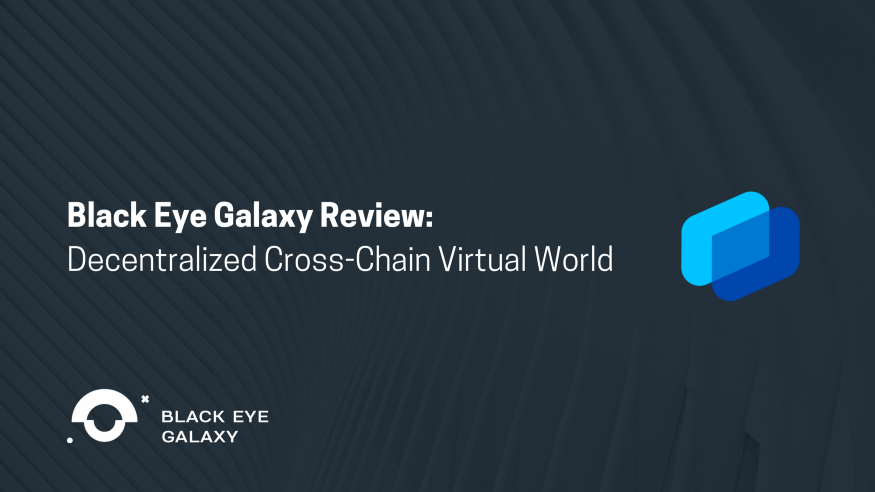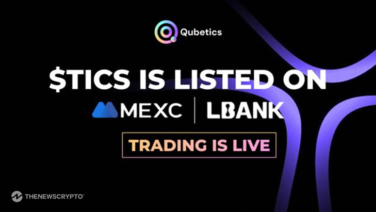As the notion of decentralization and blockchain technology keep securing the hearts of many globally today, we keep witnessing a range of projects exploring and approaching this space with unique premises. Even as a relatively nascent innovation, Black Eye Galaxy keeps attracting a robust users base with its entirely different stratagem in the DeFi ecosystem.
Curious about what this project has to offer? or perhaps, how it has progressed within a somewhat negligible period? This review will quench your curiosity.
Black Eye Galaxy — Understanding the Basics
In essence, the Black Eye Galaxy is a cross-chain NFT virtual metaverse, which embodies quite a distinctive approach to integrating the concepts of metaverses and NFTs. In case you are wondering, a metaverse is simply the blend or inclusion of q virtual world, augmented reality, as well as a form of network. On a metaverse, you can purchase assets like game items, books, lands, etc. All of these items are represented in the form of an NFT. And as you probably know, NFTs are Non Fungible Tokens, representing the ownership of a specific digital asset.
As mentioned earlier, the economy attributed to this project is pretty unique and somewhat unexplored. Instead of tapping into the concepts presented by similar projects — such as buying items found in real-life utility — Black Eye Galaxy took us to the space! So, if you’ve always nurtured the fantasy of owning a planet or solar system, this is a chance to fulfil your dreams. Here, you can purchase planets, land on those planets, explore the entire solar system or galaxy, mine resources considering some criteria. Furthermore, as a user, you can kickstart discovery missions, relocate to different planets and begin civilization on those that currently occupy such planets. From this analogy, needless to say, this notion is pretty exciting and of course unexplored by any project. As such, we should get prepared because it is going to the moon!

Black Eye Galaxy UI
Recently, the team handling this project released the first part of the User Interface. For a project such as this, beautifully incorporating the primary idea in the UI design, while ensuring optimum functionality, is necessary. And fortunately, the team, featuring individuals with vast experience in a range of fields related to DeFi, approached the design carefully with maximum attention to detail. Not to mention the aesthetics, its functionality is equally breathtaking. As such, it will undoubtedly appeal to a vast range of users regardless of the preferences relative to functionality and aesthetics.
Star Alliances
Even more intriguing, you could also form a kind of star alliance, anytime you own at least three star systems. A star alliance represents a group of multiple stars which are combined in an alliance. With this, you can mint the star alliance membership card with a ratio of 15 cards to each planet in the alliance, which will ultimately qualify you to access equal parts of the planet rewards. Essentially, star alliances are a form of shared ownership over the planet mining rewards. However, before kickstarting this process, all plants must be staked for mining. The entire process is automated, and as an alliance member, you will automatically access equal parts of the rewards generated from mining the alliance planets. The aforementioned membership cards are represented in the form of NFTs, and as such, as its owner, you may decide to sell or transfer the asset as you deem fit.
Fundamentally, the project features two types of alliance cards, which are The Black Eye Galaxy star Alliance that is directly managed by the Black Eye Galaxy team, and the Super Launcher star alliance, which is managed via Super Launcher.
- Black Eye Galaxy (BYG) Star Alliance
As indicated earlier, this star alliance will be directly overseen by the BYG team. Essentially, it features 8 star systems as well as a total of 30 planets and offers diverse utilities.
The membership card collection is limited, only offering a meager amount of 450 cards. The planets that make up the alliance are assigned a standard reward pool with $BYG at the core of it all, ensuring equal distribution to every member of the alliance. Furthermore, the project promises to grant every BYG alliance member the Iris (the core planet) Citizenship feature on the platform as well as future airdrops. Lastly, in the BYG star alliance, there will be Merch draws limited to holders of the alliance membership cards. Examining the distribution of the alliance cards, the team claims that 440 of the cards will be distributed via BYG staking pools to those who HODL $BYG, and ten of them will be kept as rewards targeting the community. With that said, if you are the type looking to earn even more from the project, this could be a viable option for you.
- The Super Launcher Star Alliance
Recently, Black Eye Galaxy announced a partnership with Super Launcher. Super Launcher is a fully automated and secured cross-channel launchpad. And you will agree with me that this is a bold and well-calculated step, considering the period in which the project has existed. Following the partnership, super Launcher purchased five-star systems to develop its SuperLauncher Star Alliance.
Similar to the BYG star alliance, this alliance also features some breathtaking utilities. Firstly, note that the membership cards are also limited to 300, unlike the 450 present in BYG. A reward pool in $BYG, as well as that in $LAUNCH, is attributed to every planet in the alliance, and the cumulative reward pool featured in $LAUNCH will sum up to $10K. As the BYG star alliance features, the Super Launcher will also have merch draws among alliance members alongside future airdrops. Lastly, the rewards will also be distributed equally between the members of the alliance fairly and transparently.

BYG Token
At the core of these features is the BYG token. $BYG is the native token utilized on the platform, used to reward users for bonuses and other activities carried out on the platform. It is cross-chain, and as a result, it can be used on all blockchains the product implements for its operations. The supply is pegged a one billion with no potential intentions to inflate this value. Relevant to this review, one of the most apparent use cases of this token is staking.
BYG Staking
The Black Eye Galaxy features a framework that allows you to pledge your $BYG token to its protocol and earn rewards in exchange. Staking this token enables you to take an active part in securing the entire network by locking up your assets. Consequently, you get rewarded for the network security in the form of the $BYG token.
On Monday, 23.08 at 2 pm UTC, the platform will open its staking pools, and as a holder of the native token, you can stake your assets and get eligible to access incentives in form of planets and membership cards. Note that the staking criteria and features vary depending on the alliance membership you hold.
As for the BYG Alliance Membership cards pool, it features a sum of 450 NFT cards, as highlighted earlier, and each user can only stake their assets once from a particular wallet. The staking will last for 30 days and the amount required is 5000 BYG tokens. Before the end of the staking, you may decide to un-stake your assets. However, this comes at a cost — you will not be eligible for any reward. Lastly, as a reward, staker will qualify for a 1 Alliance membership card.
Furthermore, for the SuperLauncher Alliance membership cards pool, similar to the BYG Alliance pool, each user is only allowed to stake once from a specific wallet, but unlike the BYG pool, there are only 250 NFT cards in the SuperLauncher Alliance Membership pool. The staking length remains the same, 30 days but the amount required for staking is increased to $8800 BYG. Also, as a user, you can decide to un-stake your token as you deem fit. However, the consequence is the same as what is highlighted in the previous paragraph. As a reward, stakers can access 1 Alliance membership card.
In the planet’s pool, there is a sum of 30 planets present in the pool, and just like other pools, you can only stake once from a specific wallet. The staking length remains the same but the amount required increased to 33k BYG tokens. Other criteria and rewards remain similar to the two aforementioned pools. As a user, you can stake in any pool you prefer. But considering the limited amount of rewards, these pools will implement an FCFS framework.
Progress of the Project
Assessing the roadmap, the internal marketplace is the next agenda following the project launch. I believe this is an actionable and practical way to sustain and guarantee the longevity of the project. Every asset present, ranging from spaceships to planets, will be sold on the platform with $BYG at the core of the process. Coupled with the staking pools, this action will undoubtedly skyrocket the demands on the token.
Moving further to the midterm milestone, there is the development of mobile app options and PCs, built on Unreal. As a gamer, you know what Unreal is capable of, and right from the project Demo, you could the breathtaking true 3D space galaxy represented in these developments.
Following this milestone is the land sales on inhabitant planets as well as multiplayer planets surface worlds. This idea is somewhat similar to what you can find on SandBox, where you can purchase lands, develop new tradable resources, adopt portals to travel in-between planets, as well as build buildings.
Disclaimer: This is a paid Press Release. Any information contained in this website is not proposed to be and doesn’t constitute financial advice, investment advice, trading advice, or any other advice. TheNewsCrypto is not responsible to anyone for any decision made or action taken in conjunction with the information and/or statements in this press release.





![5 Best Cryptos To Buy Today With the Most Upside [Analysts Predict Strong Moves]](https://thenewscrypto.com/wp-content/uploads/2025/06/5-Best-Cryptos-To-Buy-Today-With-the-Most-376x212.jpg)

